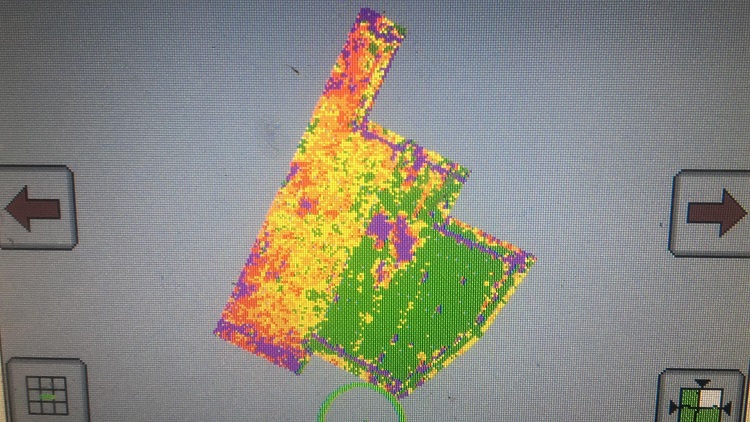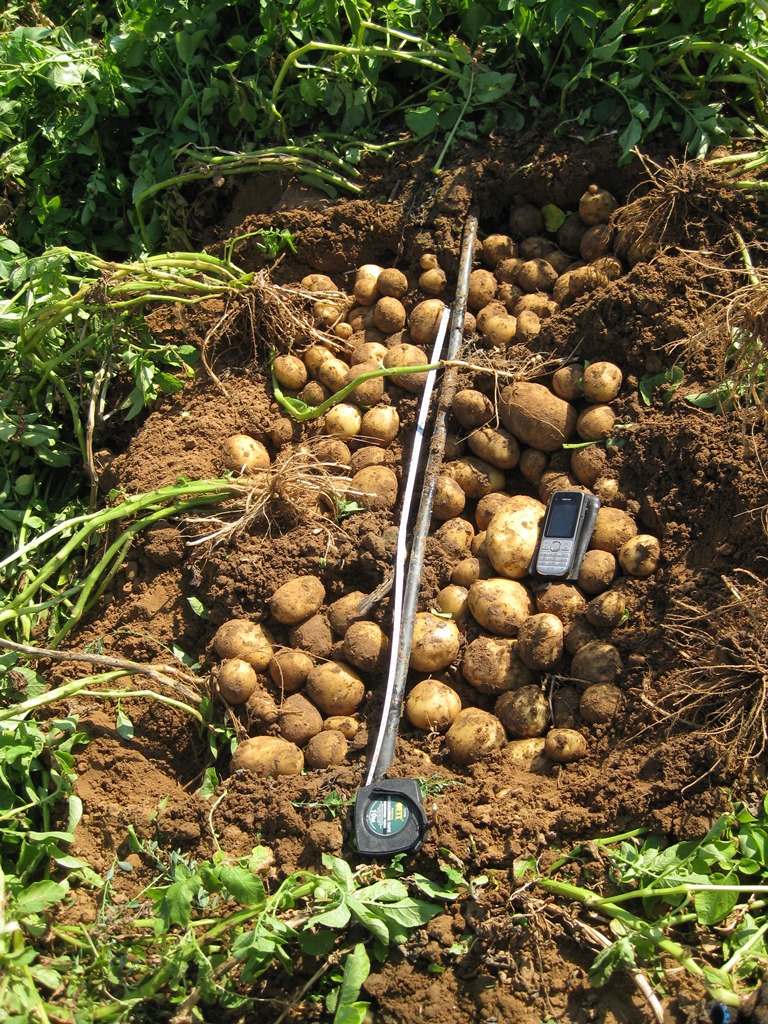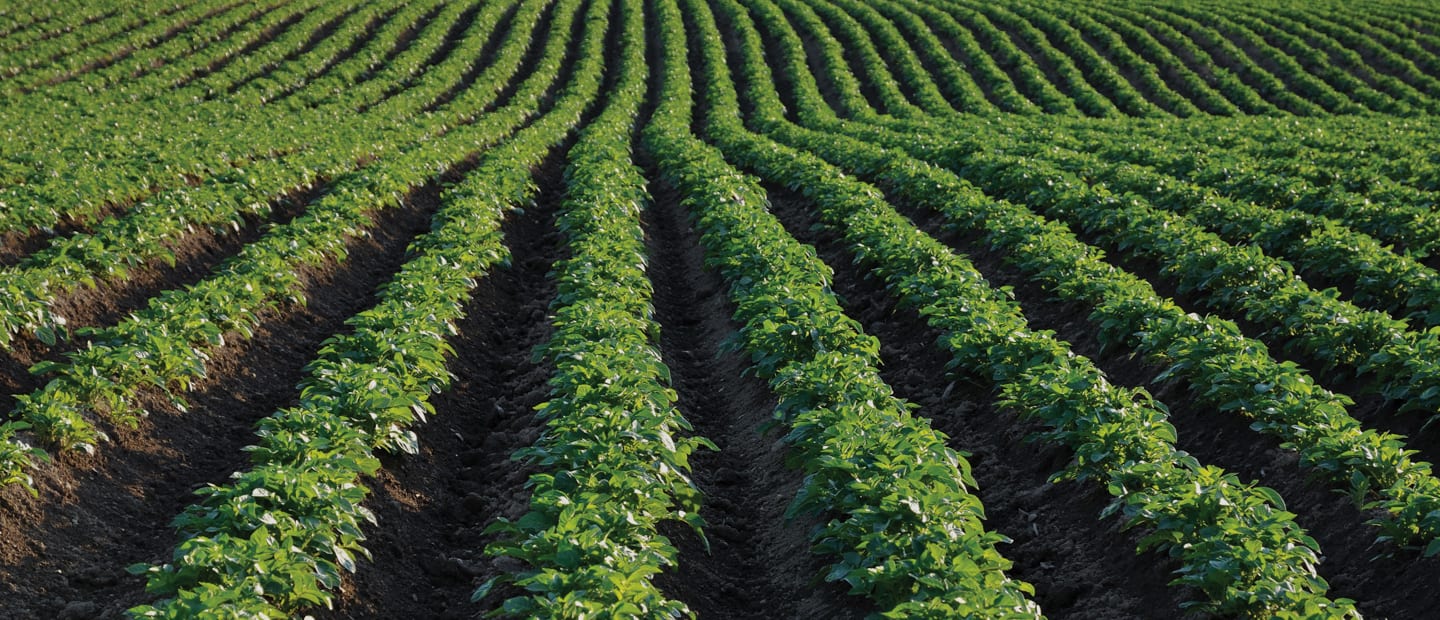Much has been said and written about it in recent years, but experts expect that the ancient rain reel will disappear from the landscape in the coming years. Reason? The emergence of site-specific irrigation via a drip irrigation system. At Jean Heybroek they have been working with this technique for years and have achieved success even in the driest parts of Africa. Now that the first positive results in open crops are also reaching Dutch arable farmers, the demand for drip irrigation is increasing rapidly.
Jean Heybroek has been supplying Toro Aquatraxx hoses for quite some time, but Gerard Schoot Uiterkamp preached against deaf ears for years. “Changes in the agricultural sector simply take time,” was the thought that kept him going. Because it is not the product: The results worldwide speak for themselves. “Even in The Gambia they managed to achieve an excellent onion harvest by means of drip irrigation,” says Schoot Uiterkamp. “The yields there were higher than with many arable farmers in the Netherlands.”
Scarcity

The Belgian company SprancoMatic specializes in water and everything related to it and more and more growers in Belgium are also switching to drip irrigation. “Water is even scarcer in Belgium than in the Netherlands and in order to get a good yield in times of drought, arable farmers in various cultivation areas are increasingly opting for the installation of drip hoses on their plots,” says Gunther Vermeiren of Spranco. In 2020, for example, a six-hectare maize plot was fitted with Aquatraxx drip tape. Here too a spectacular return was achieved.
Effective irrigation method
But despite the successes within and outside Europe: Few people wanted to hang up the reel and put hoses on the field. Until the summer of 2018. This enormous long period of heat and drought sparked the call for effective irrigation methods in arable farming and that call has still not been extinguished. “Weather extremes are increasingly common. Growers are therefore forced to think about solutions, especially when the irrigation capacity is low. Good and fresh water is by no means abundant in all growing areas. And then good water management is the only solution. ”
Crop farmer Hovius: “Big plus turned”
A few years ago Schoot Uiterkamp received support from Tijms from Geesbrug. “The results in the first year were almost disastrous,” says Johan Tijms. “The growers we worked with achieved hardly any results and had incurred extra costs.” The end seemed in sight, but she soon discovered at Tijms that it was not the technique, but the approach. “In the meantime we have had a big plus for several cultivation years,” says arable farmer Jan Hovius from Nieuw Balinge.
Spectacular returns
The Drenthe grower consciously focuses on one crop: potatoes. Hovius then adjusted its entire mechanization to further optimize drip irrigation. “For the factory potatoes where the drip hose was used, the yield was well over fifty tons and five hundred grams of starch. That is about twelve to thirteen tons of starch with peaks upwards. These are spectacular yields, especially when you consider that seed potatoes were grown on that plot in 2018. Then I knew for sure: Drip is the future. ”
Ambassadors report ‘convincing results’
And Hovius is not alone in this view. According to Hubert Pruijsen, horticultural technology consultant at Vos Capelle, the technology will undergo explosive growth in several sectors, such as tree nurseries and arable farms. Pruijsen: “We have been working with Jean Heybroek since 2015, because we believe in technology. From next year, drip irrigation will take off enormously, because the results of the growers who are already cooperating there are very convincing and are convincing more and more growers. ”
Tailor-made solution

Boike Damhuis of Veha Plastics from Oldenzaal supplies irrigation systems. Since the increasing drought, Veha supplies not only horticultural companies, but also farmers who grow in the fields. “Jean Heybroek has a lot of in-house knowledge, which ensures that growers always get the perfect custom solution when they start with drip irrigation. Moreover, the Toro Aquatraxx is of top quality and that fits well with the other products that Veha Plastics supplies.
Alternative to the reel
Agrea’s cultivation supervisors only make positive comments about the drip irrigation systems. Peter Wolters, arable farming and open field vegetables advisor at Agrea, has received more and more questions in recent years about possible alternatives to irrigation with a reel. “We soon ended up with Toro importer Jean Heybroek. Since then we have had a number of requests from customers who work with asparagus (multi-year crops), onions, potatoes and carrots (annual crops). Thanks to the drip irrigation, our customers have certainly achieved a plus. ” “That plus is difficult to express in figures, because several factors play a role in making a crop successful. But the plus is definitely in the fact that drip hoses do their job under all circumstances and that is not possible with a reel.
Cultivation benefits

Agrea provides knowledge, advice and a wide range of products that enable its customers to achieve the best return: “In terms of cultivation, drip irrigation ensures less stress for the plant, which means better growth. In addition, irrigation via a reel ensures that the crop also gets wet, with drip irrigation the plant remains dry, which means that there is less risk of (fungal) diseases, which means savings in crop protection in certain cases. Finally, all our customers who work with drip hoses indicate that they use much less water. ”
National tests have shown that the water efficiency of drip is considerably higher than with a reel: sixty percent to seventy (reel) compared to almost one hundred percent (with drip irrigation). “All these things have an effect on the balance and the yield of a particular crop. How high that effect is, of course, depends on the sales prices of the products. But that drip irrigation provides a plus at the bottom of the line has now been more than proven for us and our customers. ”

